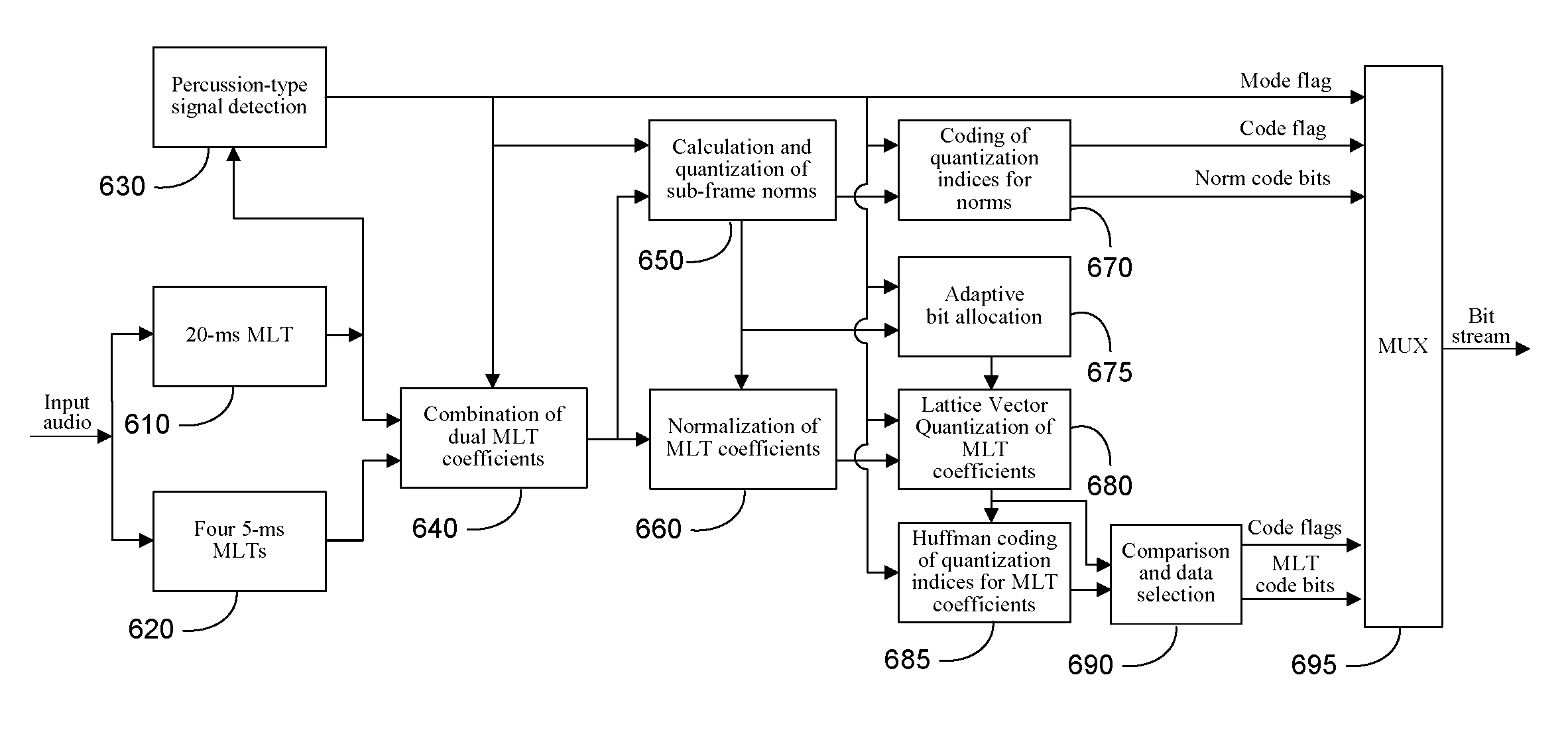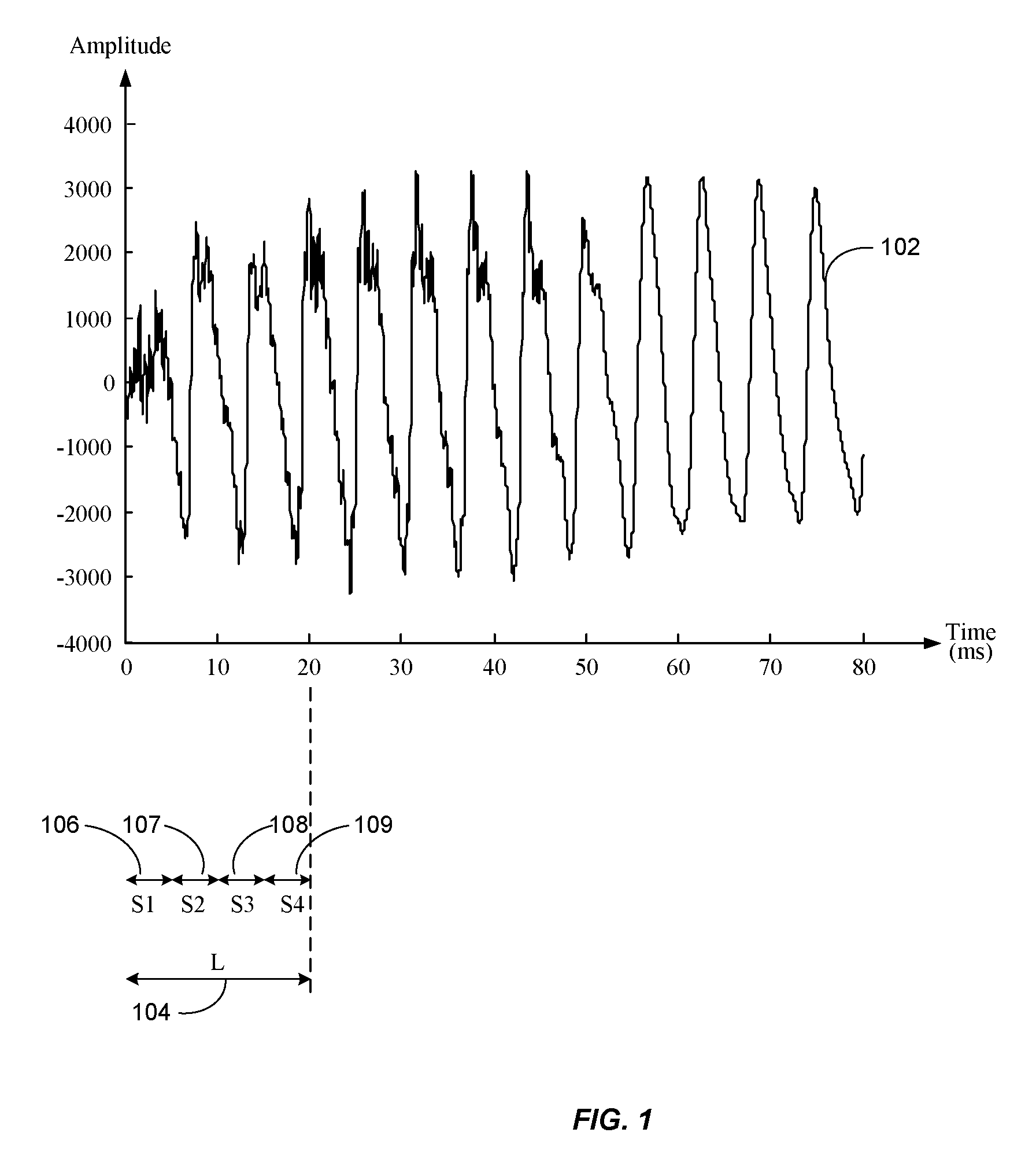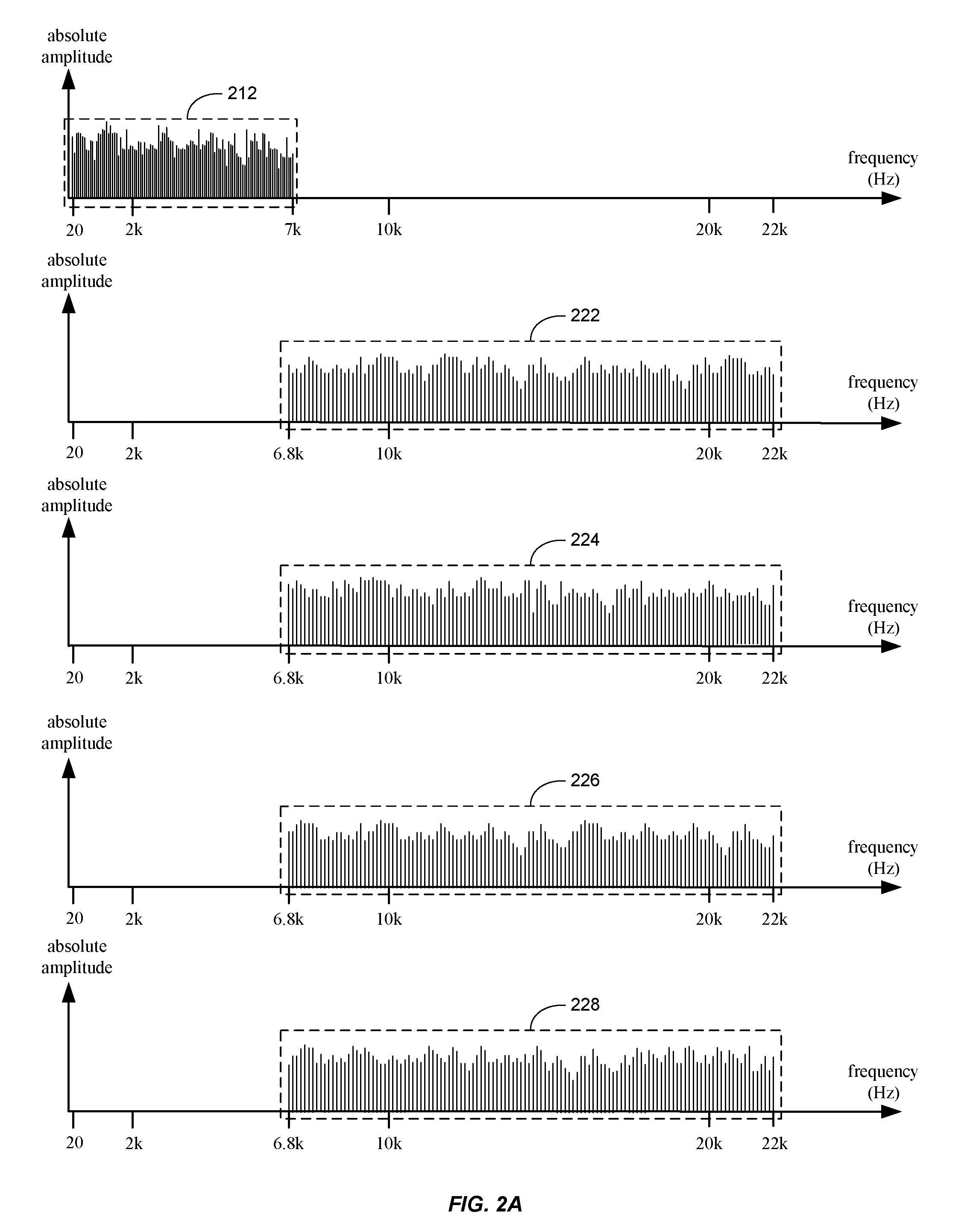Dual-transform coding of audio signals
a technology of audio signals and coding, applied in the field of encoding and decoding audio signals, can solve the problems that huffman coding cannot be used in order to reduce unnecessary computation costs, and achieve the effect of reducing data load and improving sound quality
- Summary
- Abstract
- Description
- Claims
- Application Information
AI Technical Summary
Benefits of technology
Problems solved by technology
Method used
Image
Examples
Embodiment Construction
[0034]Various embodiments of the present disclosure expand and improve the performance of audio signal processing by using an innovative encoder and decoder. The encoding process broadly includes a transform process, a quantization process, and an encoding process. Various embodiments of the present disclosure provide improvements in all three processes.
[0035]In most prior art audio signal processing, the audio signal frame has a fixed length. The shorter the frame length, the shorter the delay. The shorter frame length also provides better time resolution and better performance for high frequencies. But a short frame provides poor frequency resolution. In contrast, the longer the frame length, the longer the delay. But a longer frame provides better frequency resolution and better performance at lower frequencies to resolve pitch harmonics. In a compromise, the frame length is typically in the range of 20 ms, which is the adopted frame length in the G.722.1 recommendation. But a co...
PUM
 Login to View More
Login to View More Abstract
Description
Claims
Application Information
 Login to View More
Login to View More - R&D
- Intellectual Property
- Life Sciences
- Materials
- Tech Scout
- Unparalleled Data Quality
- Higher Quality Content
- 60% Fewer Hallucinations
Browse by: Latest US Patents, China's latest patents, Technical Efficacy Thesaurus, Application Domain, Technology Topic, Popular Technical Reports.
© 2025 PatSnap. All rights reserved.Legal|Privacy policy|Modern Slavery Act Transparency Statement|Sitemap|About US| Contact US: help@patsnap.com



